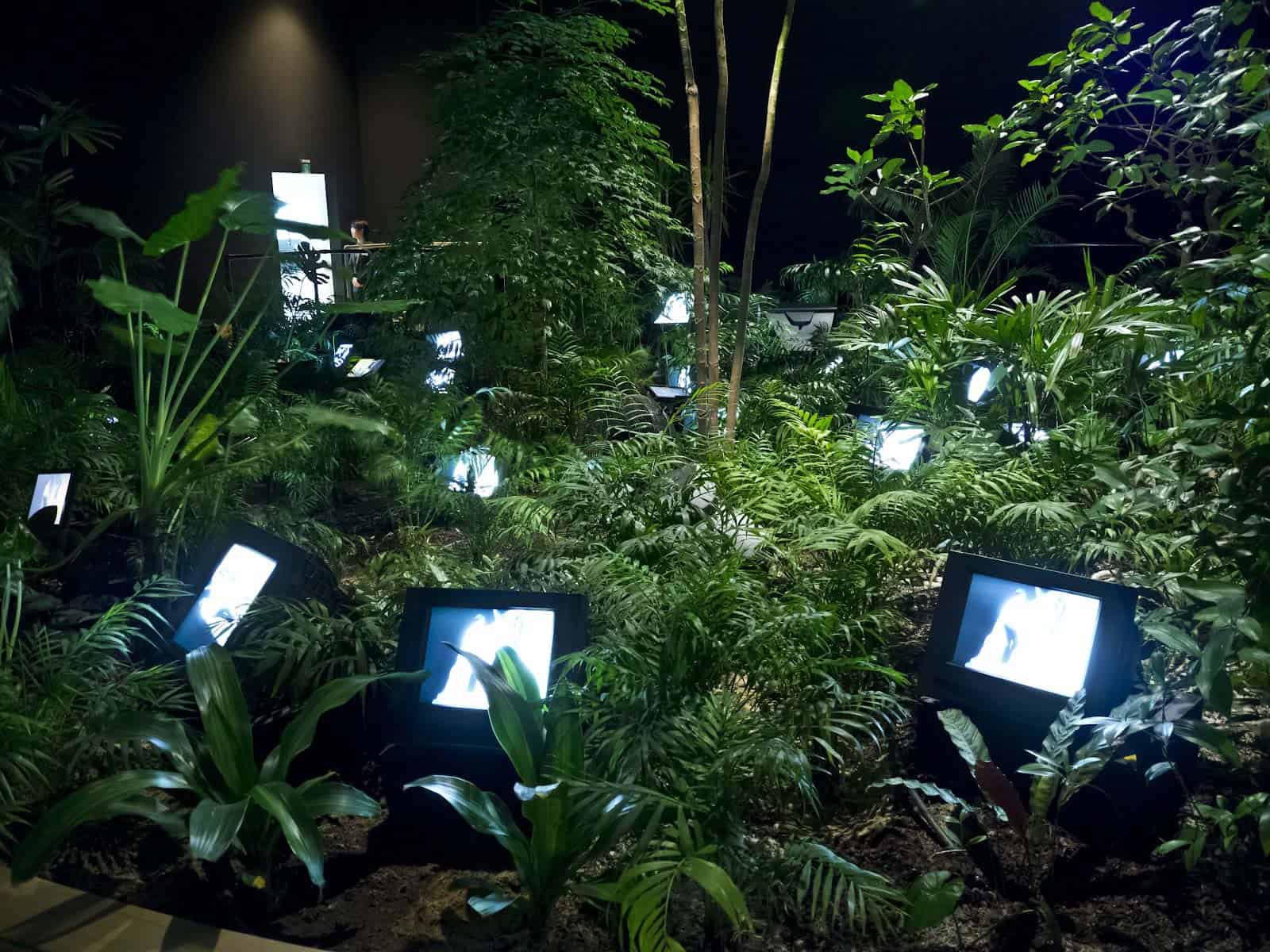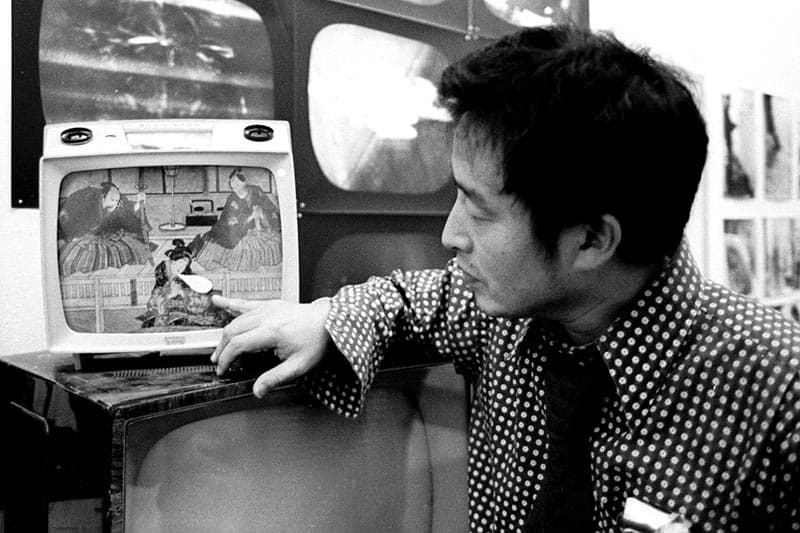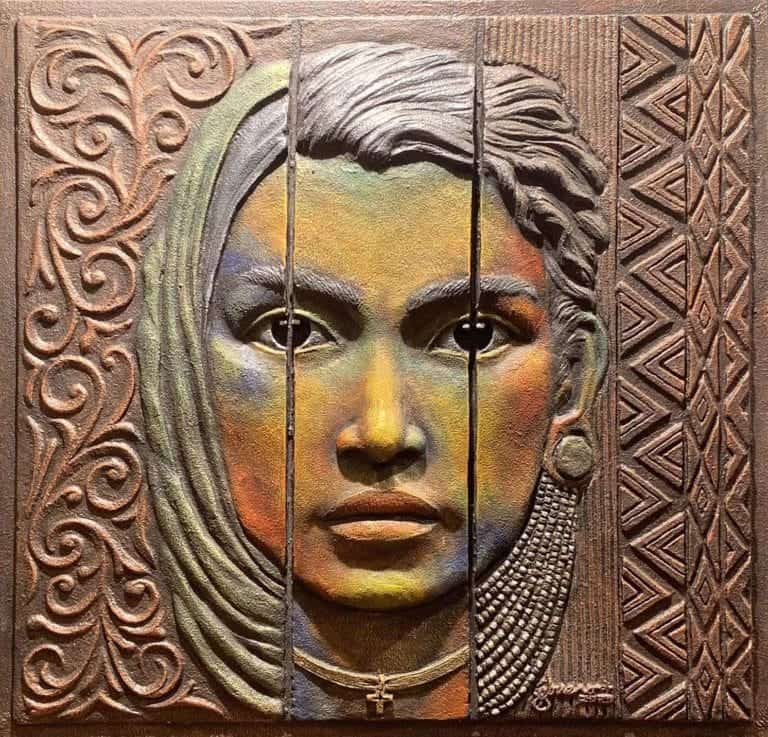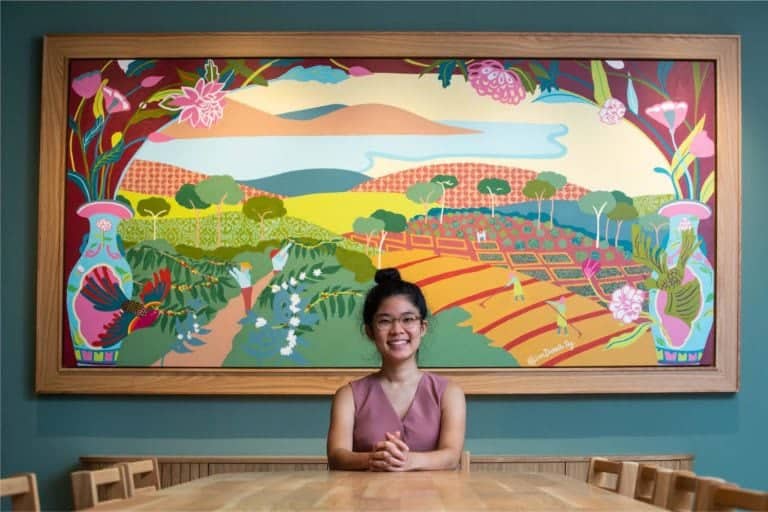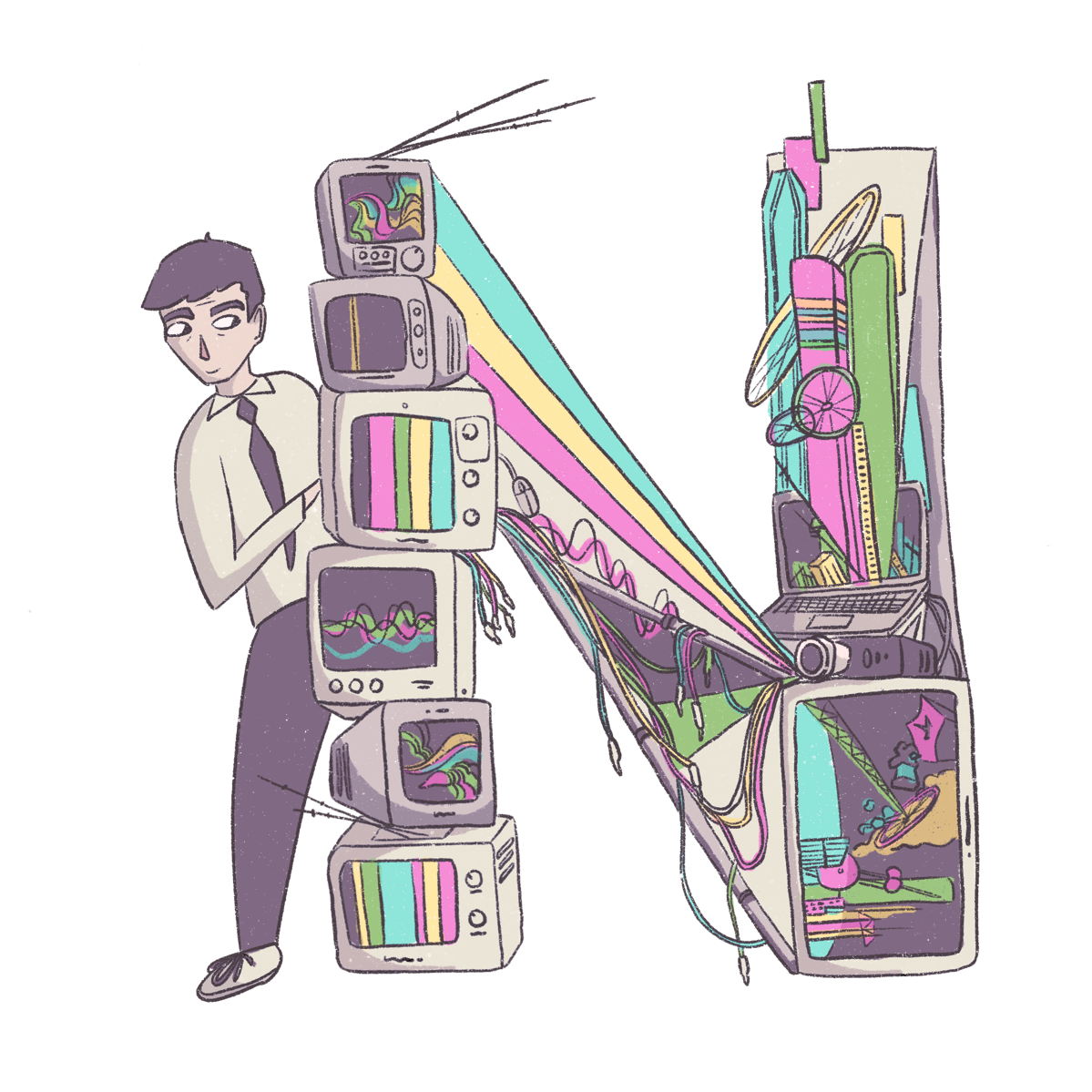
…is for New Media.
Simply put, New Media encapsulates art that has been created, modified, or transmitted by technological means. While New Media might make you think of the snazzy digital artworks we have today, the genre can be traced back to the late 19th century, when artists first began to experiment with the digital technologies that began to become widely available for public use.
The early 20th century saw the growing popularity of film, radio, and photography while the TV became commonplace in the 1950s. German painter Wolf Vostell (b. 1932 – 1998) was thought to be the first artist to incorporate televisions into his practice in 1958. As a member of Fluxus — an international and interdisciplinary community of artists, composers, and poets — he worked alongside other artists, namely Nam June Paik, who shaped the burgeoning field of video art in the following decades.
As time passed, more technologies were developed and integrated into New Media practices. Today, one might define New Media broadly as artwork that includes technology and shifts away from ‘older’ and more traditional object-based art forms, such as painting and sculpture.
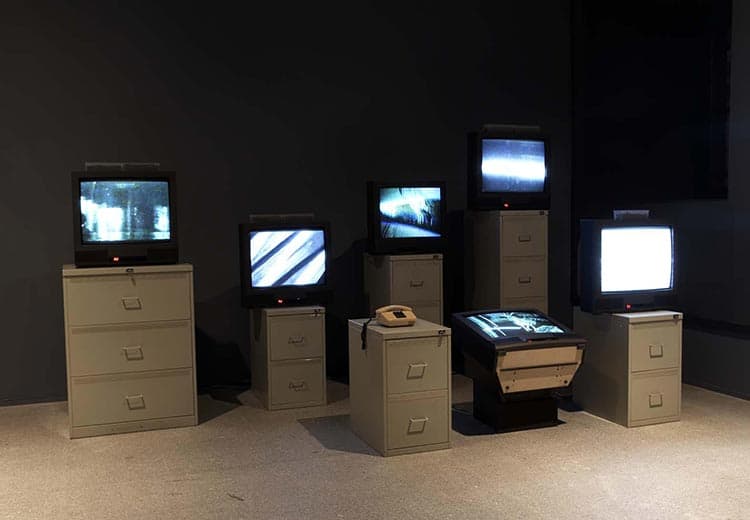
Dawn of the digital
Since then, the genre of New Media has only continued to evolve boundlessly, since the very definition of New Media depends on the context in which it emerges.
Constant advancements in technology, such as the introduction of the internet, have allowed art to exist in virtual forms and paved the way for information to be disseminated on a global scale like never before. The ever-growing list of mediums you might find associated with New Media includes digital art, computer animation, sound art, and even robotics.
New media artists to know
Two of the most notable artists who have pushed the technological boundaries of their time include video art pioneer Nam June Paik (b. 1932 – 2006) and Chinese multimedia artist Cao Fei (b. 1978).
Heralded as the founder of video art, Korean-American Nam June Paik was one of the first artists to introduce tapes and video into his art. An interest in telecommunication and mass media marks his oeuvre, with him introducing the term ‘electronic superhighway’ in 1974 to propose an electronic system that connects cities across the world together — an impressive prediction considering that the internet would only be introduced for public use in 1993.
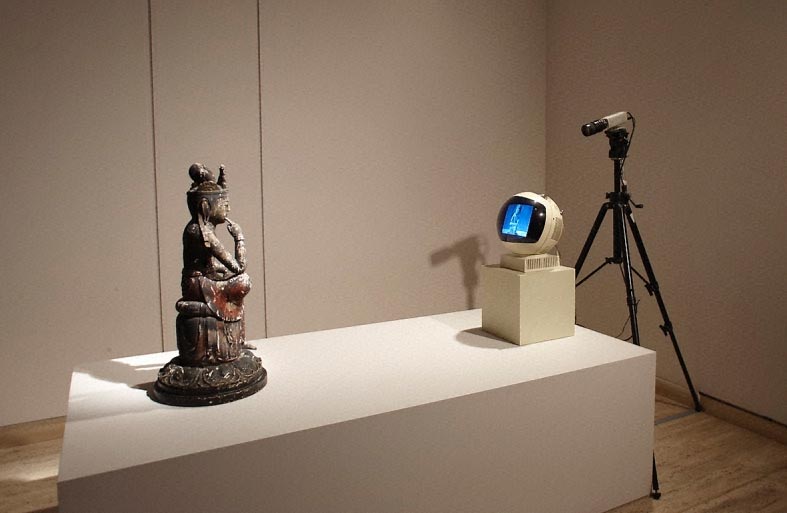
One of Nam’s most famous works is undoubtedly TV Buddha, an installation comprising of a sitting Buddha statue in front of a television and video camera. The television screen plays recordings of the still statue in an endless loop. Here, Paik juxtaposes elements of tradition and religion with an emblem of modern-day life, perhaps as an ode to his lifelong exploration of Zen Buddhism as an artist at the forefront of technological advancement. We might also consider how the work explores the theme of surveillance brought on by technological advancement, which has only intensified by leaps and bounds since the work was created in 1976.
Currently working in Beijing, Cao Fei uses photography, video and digital means to create works that comment on China’s growing industrialisation, urban development, and economic growth. A key work is RMB City: A Second Life City Planning by China Tracy (aka: Cao Fei), which takes part of its name from the Chinese currency, yuan. In 2007, Cao used the online game Second Life to recreate and re-imagine the future of China’s rapidly growing cities.
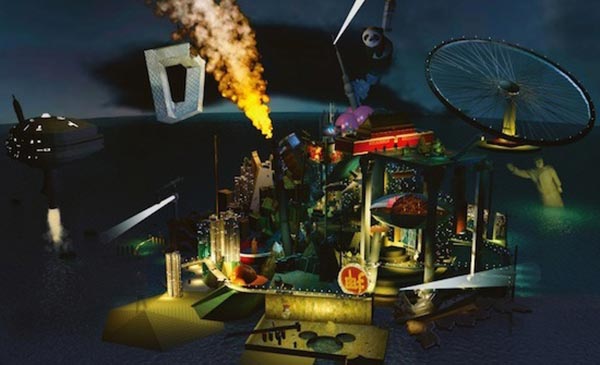
In one screenshot, RMB City is presented as an amalgamation of metropolitan and capitalist symbols, such as glowing skyscrapers and Disney logos, while a statue of Mao Zedong sinks in the surrounding waters. What was particularly interesting here is that anyone online, whether art world aficionado or general player, could access and explore the city, thus testifying to the interactive and inclusive potential of new media.
An ever-changing medium
New Media continues to be ever-changing as the capabilities of contemporary technology increase, and artists continue to test the boundaries of digital mediums. We’ve reaped the bounty of such innovation in the past couple of years, with art made by AI (Artificial Intelligence), works such as Marina Abramović’s The Life (2019) that blend ‘real’ and virtual realities, and of course, the recent explosion of NFTs (non-fungible tokens). Moving forward, these phenomena testify to a blurring of lines between art and technology and the potential for more exciting interdisciplinary practices.
_____________________________
Curious to find out more about the visionary new media artist Nam June Paik? Check out Nam June Paik: The Future is Now at the National Gallery Singapore from 10 Dec 2021 – 27 Mar 2022. For more information, click here: https://www.nationalgallery.sg/namjunepaik.
Feature image: Nam June Paik, TV Garden (2000 Version), 1974, video installation with color television sets and live plants, dimensions vary with installation, Solomon R. Guggenheim Museum, New York. Image source: Public Delivery.
Letter ‘N’ illustration by Nadra Ahmad
